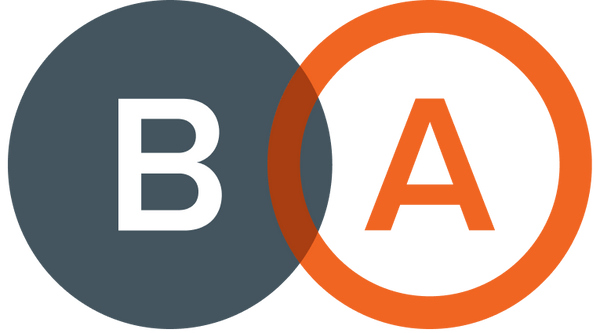At Something Digital, the BA team had their eyes peeled, ears pricked and actively soaked up all of the accessibility statistics and key learnings that were shared by Yao Ding - Meta’s Accessibility Research Lead. Working in the design space through web and online presence, the BA Creative team found the insights invaluable and exceptionally helpful when it comes to designing mindfully and creating solutions with purpose.
Driving business towards digital inclusivity: Designing for Accessibility
This was an insightful discussion featuring:
Yao Ding, Accessibility Research Lead, Meta
Embracing Digital Accessibility: A Path to Inclusivity and Market Growth
In our increasingly digital world, accessibility is not just an option; it’s a necessity. This Digital Accessibility session highlighted how crucial it is for businesses to embrace accessibility from the ground up. With over 1 billion people globally living with disabilities, including 1 in 5 Australians, the potential for market growth through inclusive design is immense. Moreover, 70% of disabilities are invisible, which underscores the importance of incorporating accessibility in all digital products from the very beginning.
The Market Opportunity and Economic Impact
People with disabilities represent a vast and often overlooked market segment. As demonstrated by Apple's iPhone voiceover feature, which is preferred by over 70% of blind users, accessibility features can drive brand loyalty and market share. This is a prime example of the “curb cut effect,” a concept originally coined to describe the way curb cuts—small ramps on sidewalks—benefit not only wheelchair users but also parents with strollers, travelers with luggage, and many others. Similarly, closed captions, audiobooks, and speech recognition were initially developed for individuals with disabilities but have become widely popular, enhancing user experiences for everyone.
For businesses, the lesson is clear: investing in accessibility doesn’t just make good ethical sense; it’s a sound business strategy. Meta's accessibility playbook emphasizes the economic advantage of incorporating accessibility from the start, noting that retrofitting products can be up to 100 times more costly than building accessibility in from the beginning. By doing so, companies not only reduce potential legal risks but also open their products to a broader audience.
How to Implement Accessibility in Digital Products
The session provided actionable steps for integrating accessibility into digital product development. First and foremost, gathering user requirements from individuals with disabilities should be standard practice. This insight enables developers to understand the specific needs of their users, which can then be incorporated into agile user stories and development sprints. Including accessibility checks as part of the quality assurance process before product launch is essential to ensure that the final product serves everyone effectively.
Furthermore, organizations are encouraged to engage directly with the disability community. Through co-design workshops, companies can gain firsthand insights and test their products with real users who have disabilities. This approach not only enhances product quality but also fosters trust and loyalty among users.
Moving Forward with Accessibility
For companies like Meta, achieving digital accessibility is an ongoing commitment that involves every stage of product development. By embedding accessibility into design specifications, companies can ensure that their products are compatible with assistive technologies such as screen readers, voice control, and alternative input devices. It’s not enough to simply add an accessible version later on; accessibility must be part of the primary product.
In the end, the true goal is to create a product that is just as usable and enjoyable for someone with a disability as it is for someone without. As the speakers emphasized, accessibility should be considered standard practice in product design and development, not an afterthought. Companies that embrace this mindset will not only contribute to a more inclusive digital landscape but also unlock new market potential and drive economic growth.
By focusing on inclusivity and accessibility, businesses have the opportunity to make a lasting impact—not just for people with disabilities but for all users. It’s time to step up, engage with the disability community, and lead the way in creating a digital world that is truly accessible to everyone.
BA's Final Thoughts
The BA team was thrilled to have the opportunity to hear from Yao Ding on Digital Accessibility. Yao's insights resonated deeply with our mission at BA Creative, of creating meaningful, inclusive digital experiences. Understanding that over 1 billion individuals worldwide live with disabilities underscores just how crucial it is to design mindfully. Every website, piece of content, or digital marketing initiative that BA Creative develops, must be accessible to everyone, not just those without disabilities. Yao's perspective emphasized that this isn't merely about meeting standards—it’s about harnessing the power of purpose-driven design to foster a truly inclusive digital landscape.
Through the concept of the "curb cut effect," we were reminded that accessibility features often benefit everyone, not just those with disabilities. At BA Creative, we're committed to continuing to integrate accessibility into our workflow from the outset. This means embedding inclusive practices within our agile development process, such as incorporating accessibility into our user stories and conducting robust quality assurance checks. This approach ensures that our solutions are accessible to all users and perform better overall. In a world that is increasingly digital, mindful and purposeful design isn’t just an ethical choice; it’s essential to creating engaging, effective, and universally accessible digital experiences.
